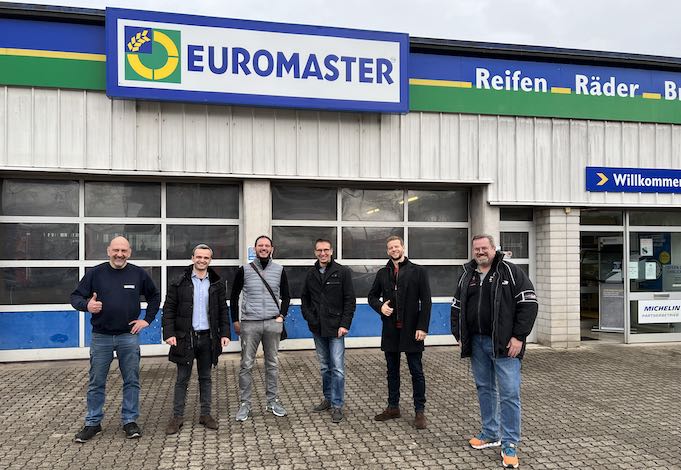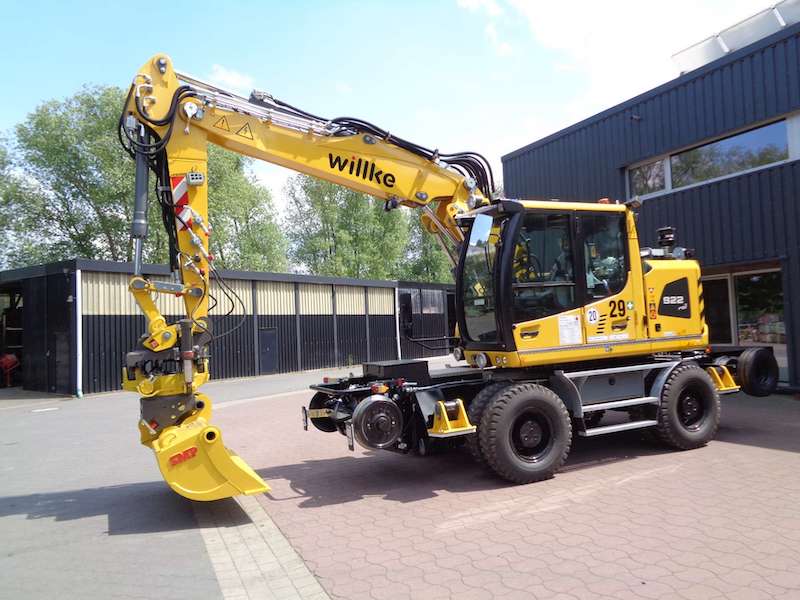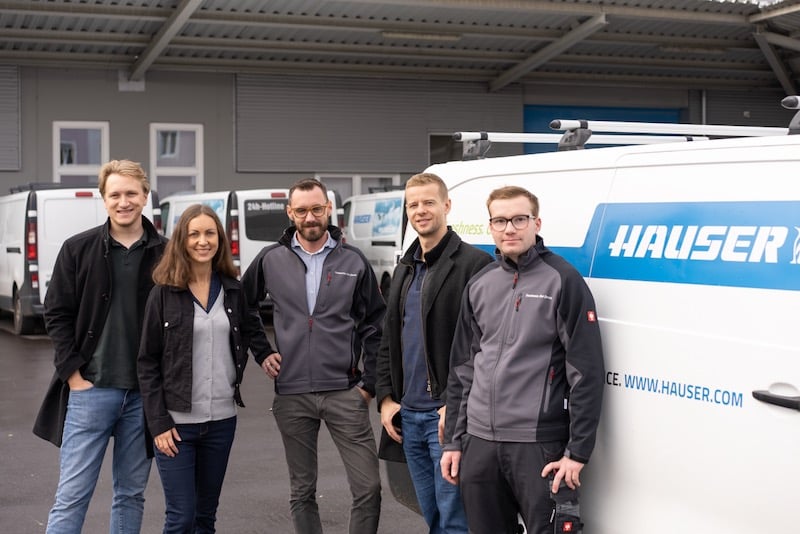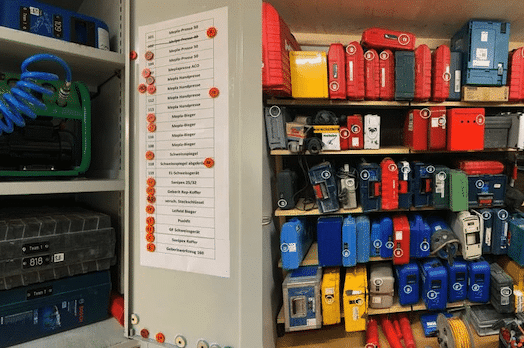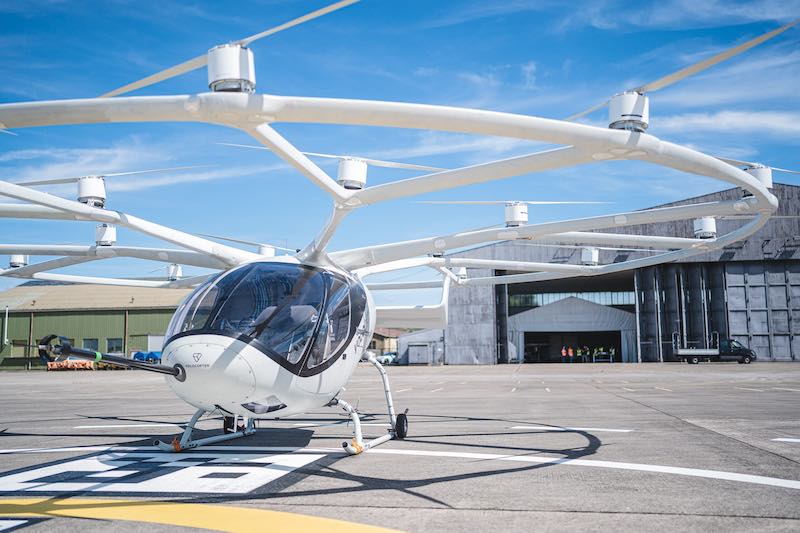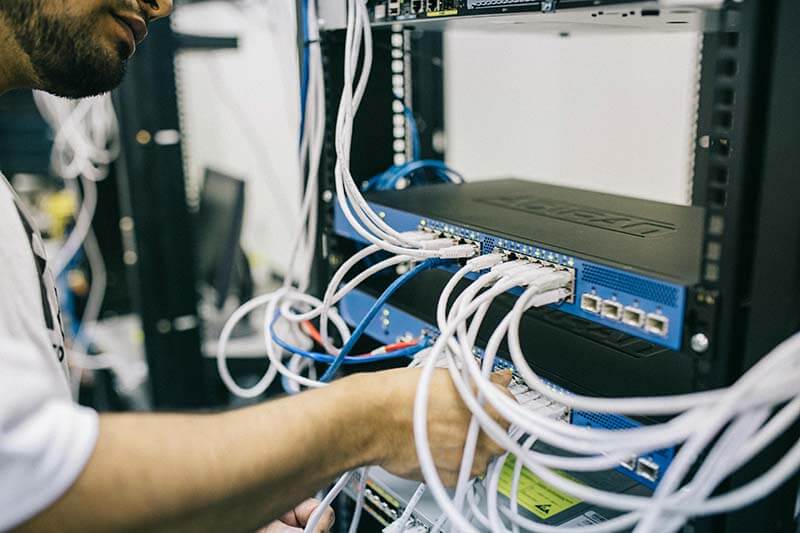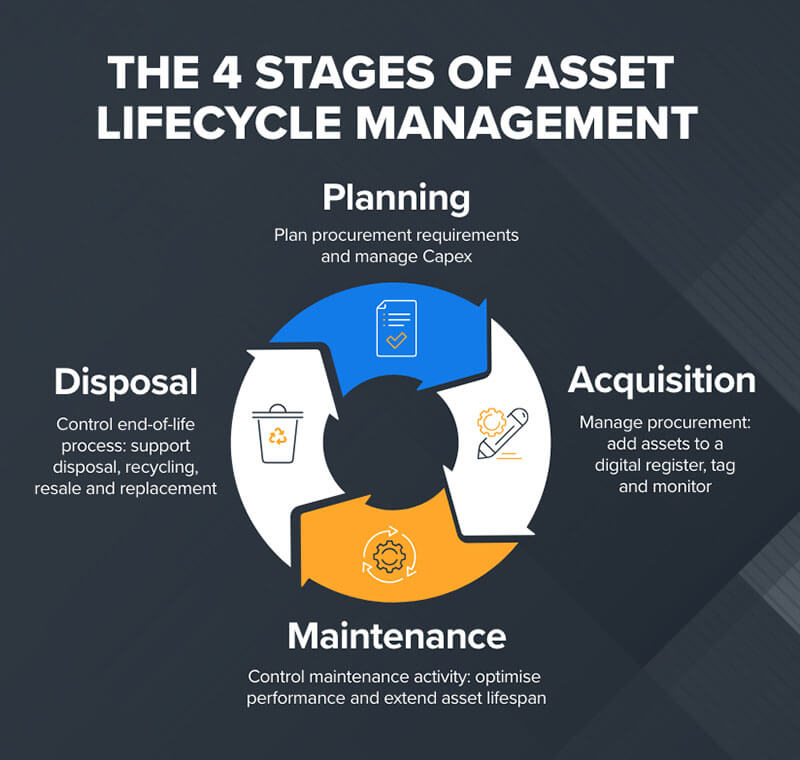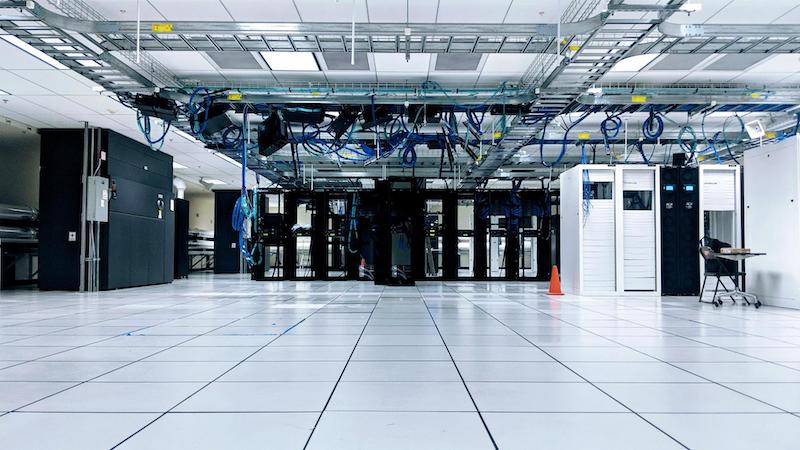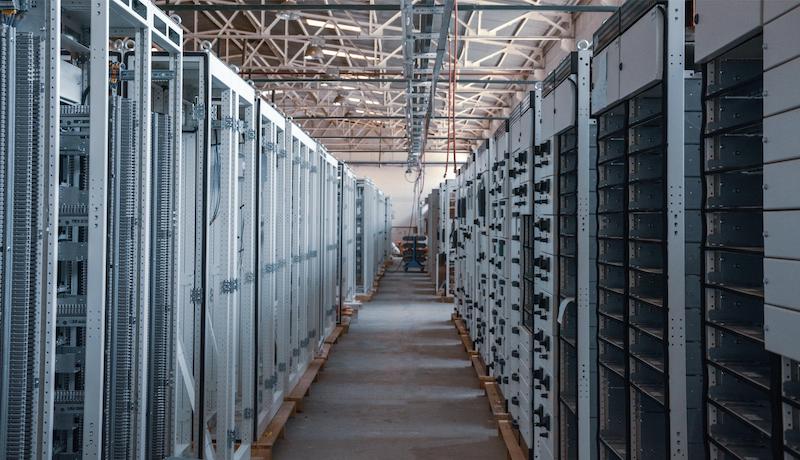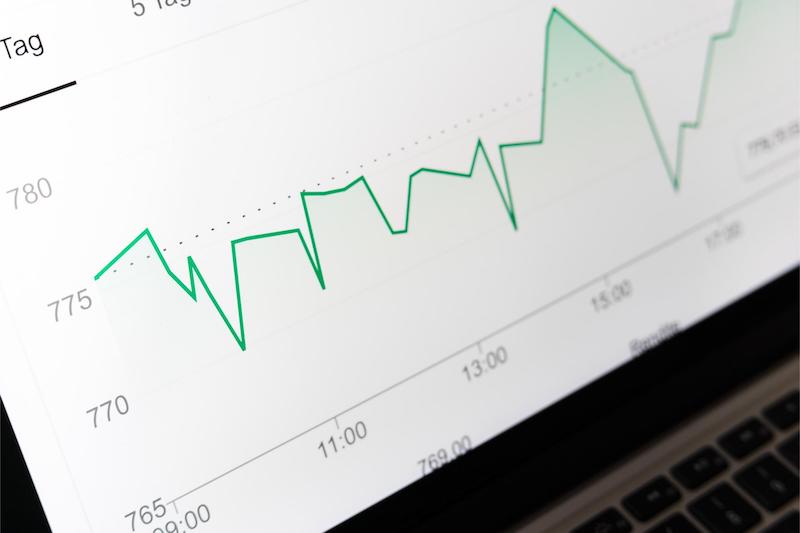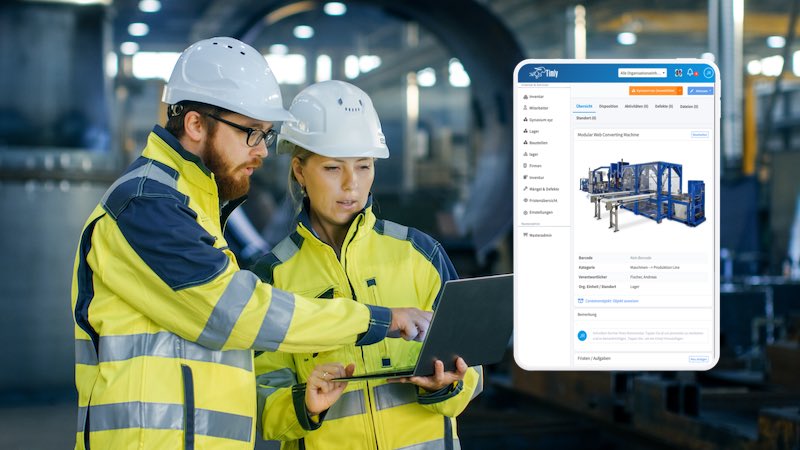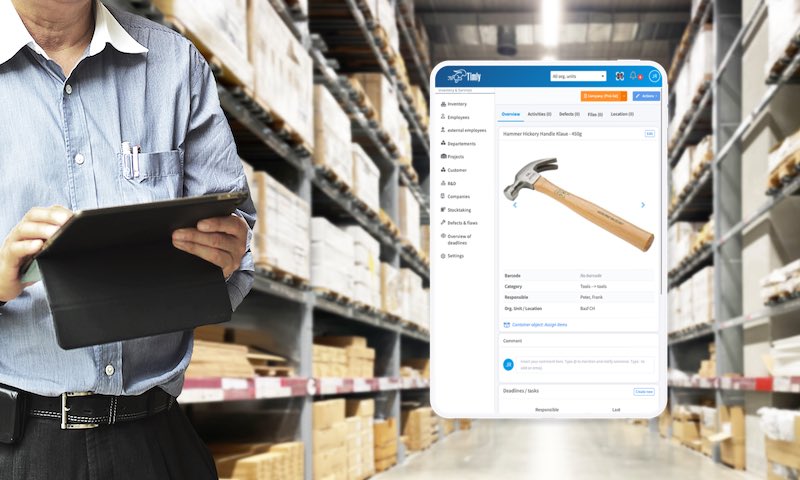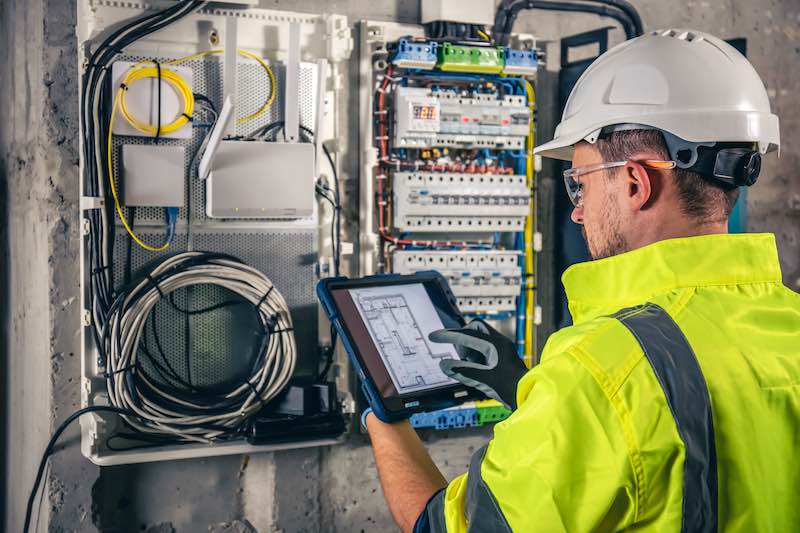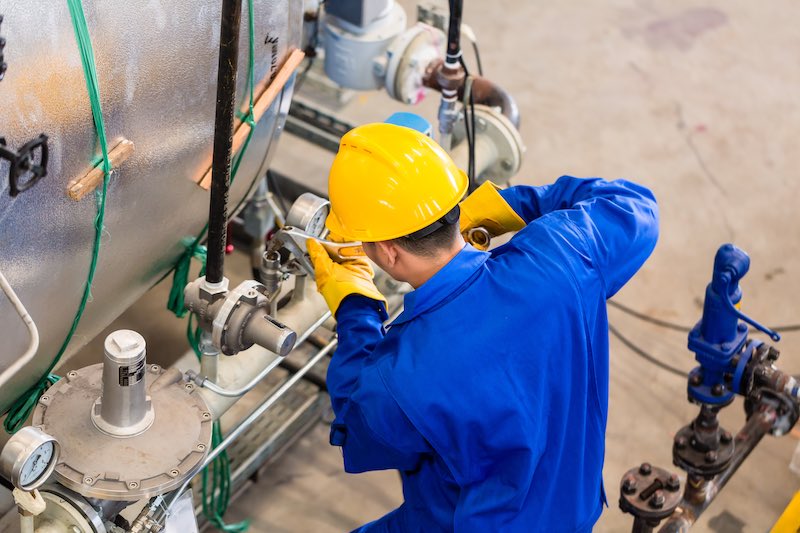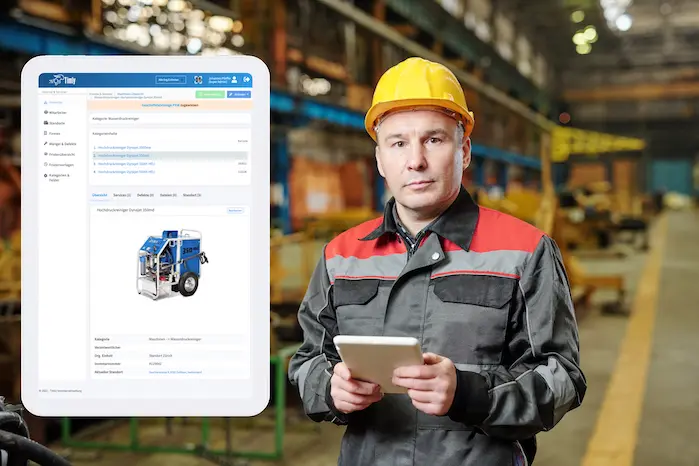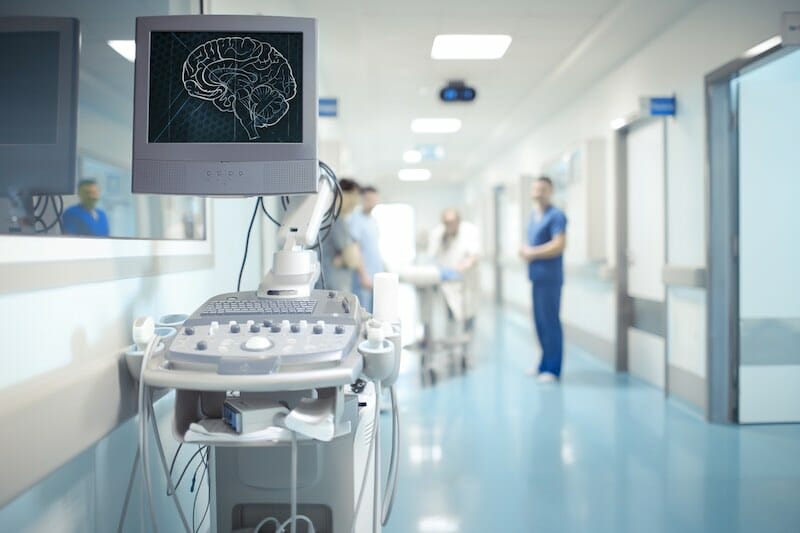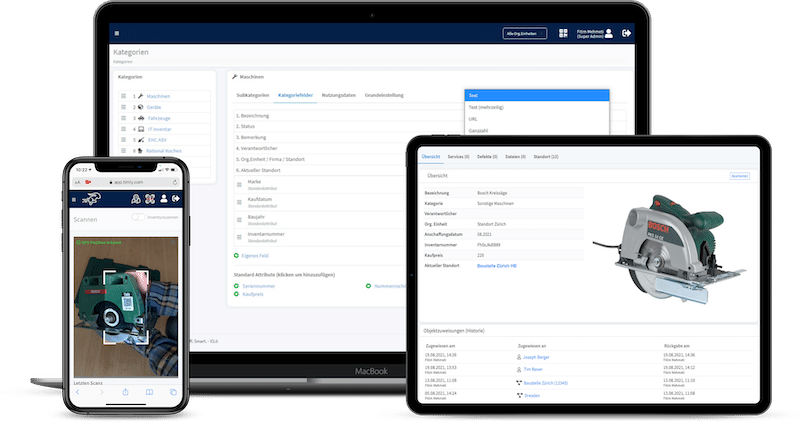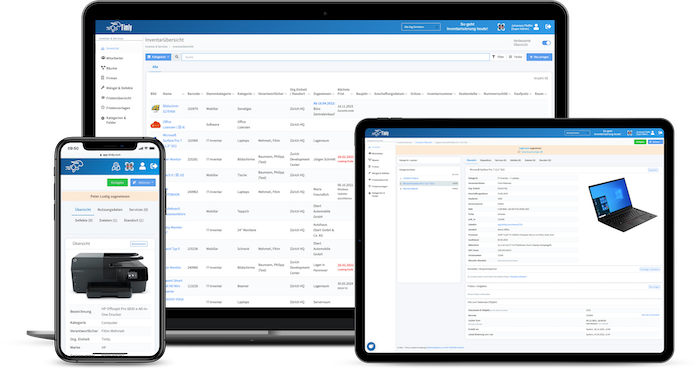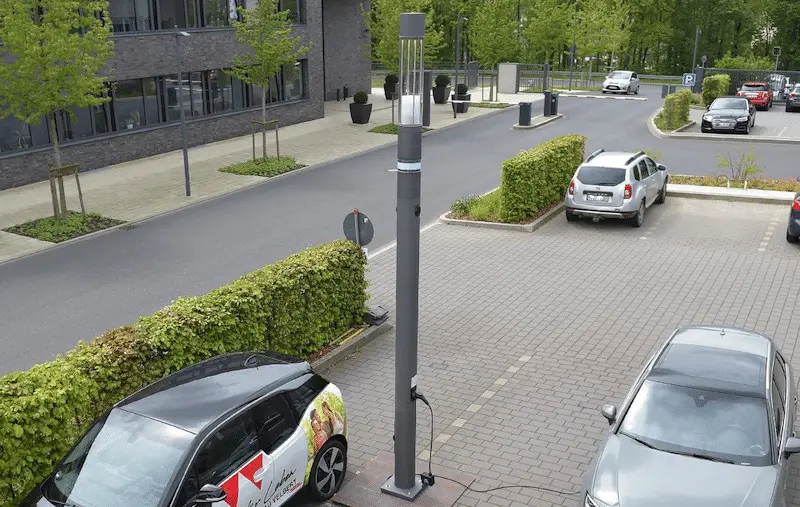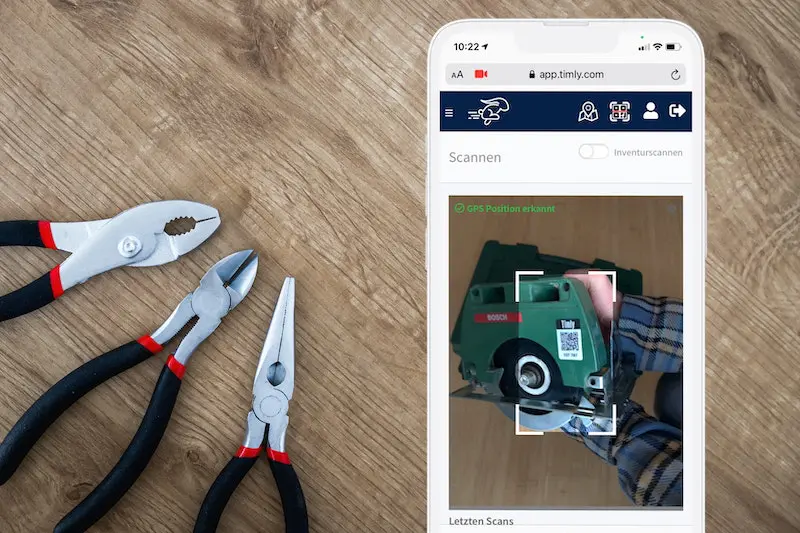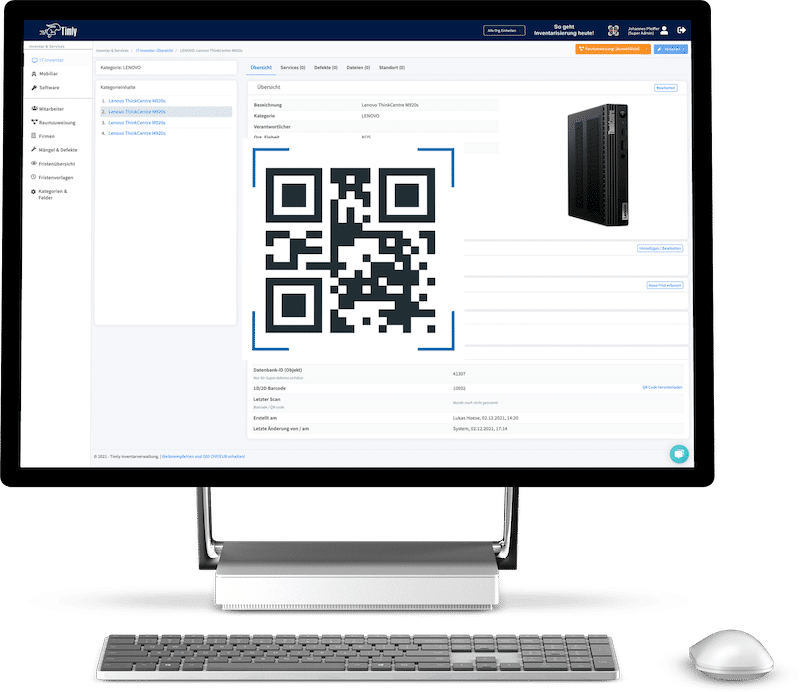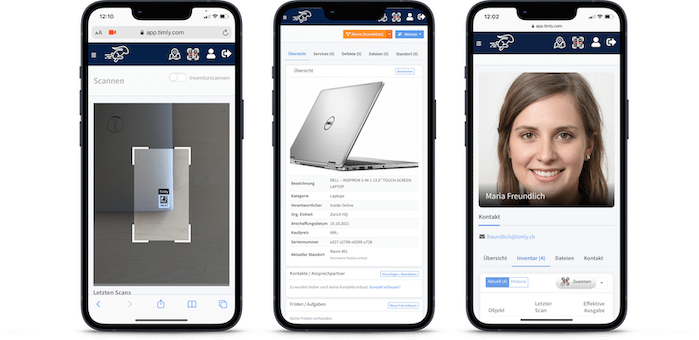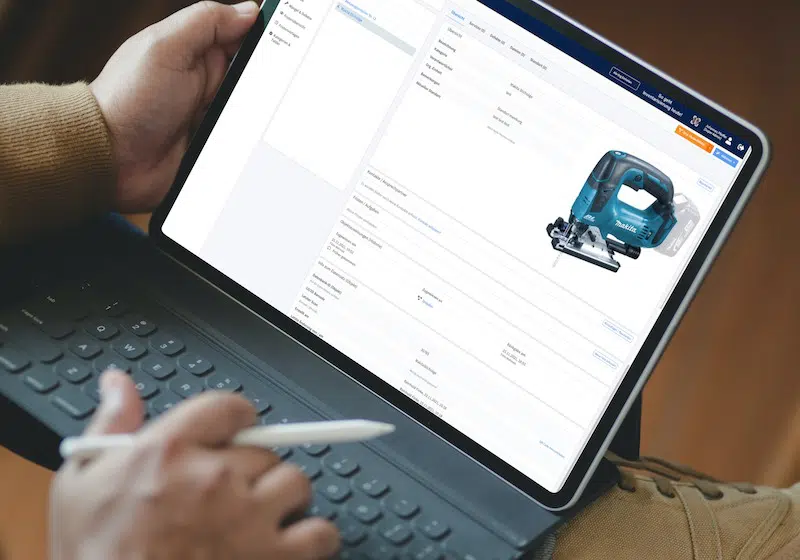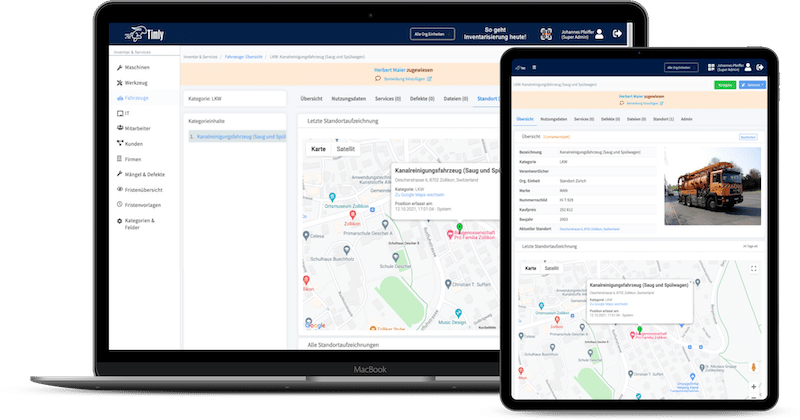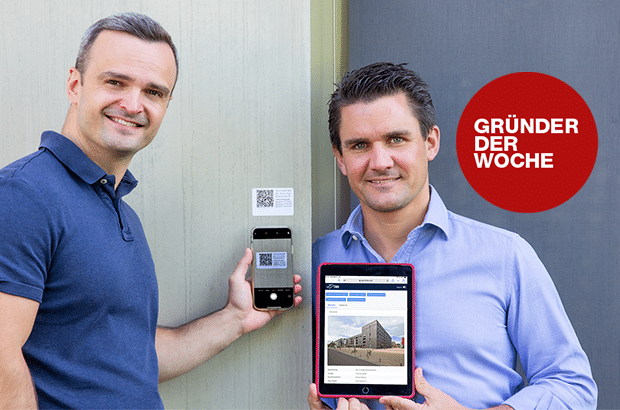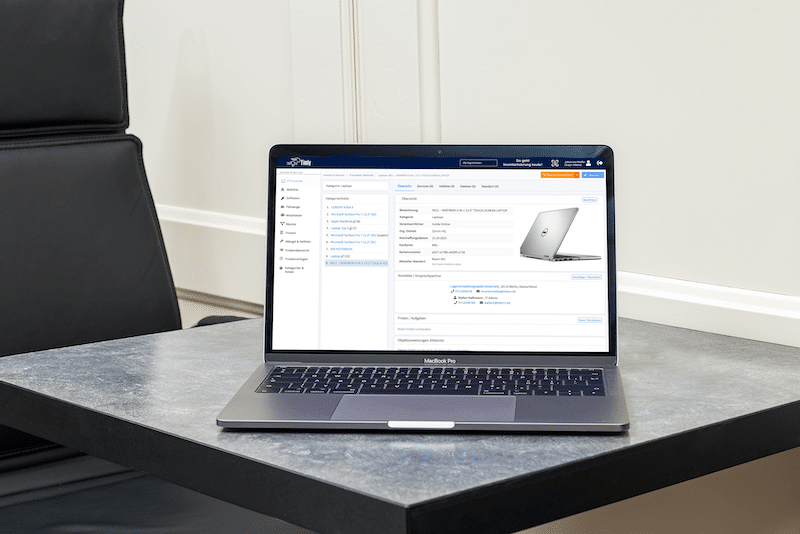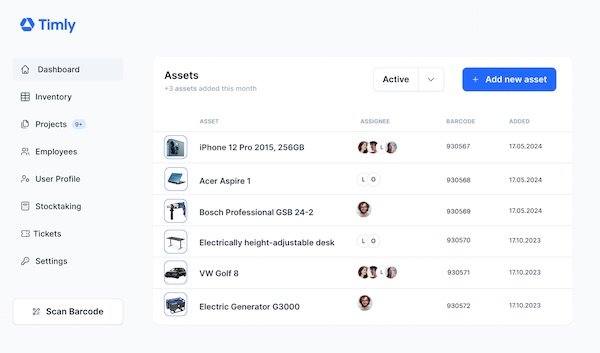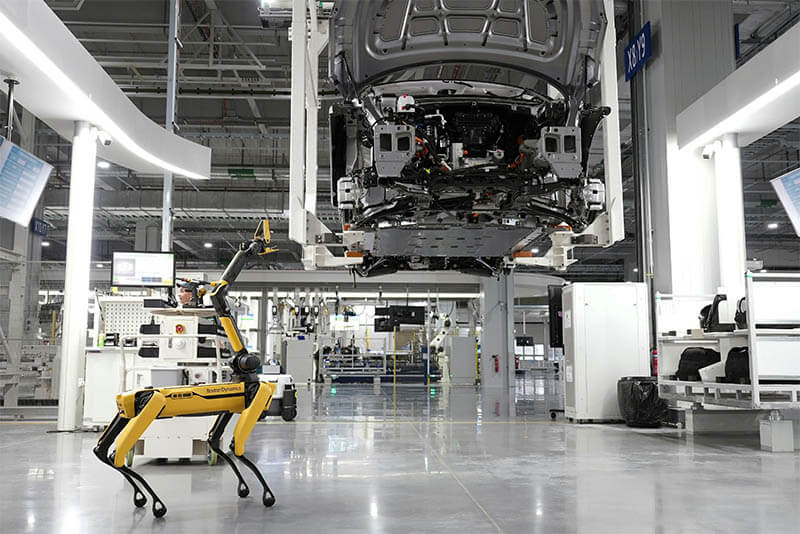
- IIoT streamlines workflows, optimizes machine operations, and enables real-time data analysis, leading to significant gains in efficiency and productivity.
- Predictive maintenance, optimized resource allocation, and reduced downtime contribute to substantial cost savings and improved ROI.
- Real-time monitoring of environmental factors, equipment health, and worker safety helps mitigate risks and create safer working environments.
Benefits of IIoT
The industrial Internet of Things (IIoT) is a transformative technology that streamlines sensors, software, and machinery by connecting them to the Internet. It is designed to collect, analyze, and interpret information. This can provide real-time information and predictive analysis that will help improve operational efficiency. Moreover, it will help reduce costs and enhance production. IIoT is used mainly in the manufacturing, energy, and transportation sectors. It helps transition from manual and labor-intensive operations to more automated ones.
IIoT provides many benefits for businesses, primarily in manufacturing and industrial settings. Some of the advantages are:
- It helps to provide real-time data, which helps to improve productivity.
- It helps collect and analyze data and, therefore, predict equipment failures. This helps maintain the balance between supply and demand.
- It integrates advanced sensors and software to analyze data. Moreover, it improves operations and drives business direction.
It also helps to provide:
Real-Time Data Visibility
This helps stakeholders and end consumers make informed decisions about risks and potential difficulties that may arise. It also helps ensure transparency and timely decisions to improve service delivery.
Supply Chain Management
IIoT can help improve supply chain management and ensure real-time inventory tracking from start to finish. This allows businesses to balance supply and demand and aids them in adapting to market changes.
Data-Driven Insights
IIoT helps integrate sensors, software, and machines using internet connectivity. Moreover, it helps collect data utilizing all these tools while using AI to read and turn the data into insights for business. This allows stakeholders and decision-makers to improve operations efficiency.
The advantages of IIoT are:
- It provides real-time insight into machine health and key performance indicators (KPIs). This ensures that manufacturers monitor operations continuously while ensuring decision-making and operational efficiency.
- It integrates devices, sensors, and analytics. This enhances asset management strategy, and helps address issues in cloud based asset management. Moreover, it can extend device lifespans to a few years and reduce maintenance costs.
- It uses predictive maintenance to reduce downtime by detecting failures and ensuring maintenance is scheduled to minimize unplanned downtime and operational costs.
The challenges of using IIoT are:
- The potential risk of cybersecurity is that the system is prone to cyber threats, which can cause data breaches, system failures, and life-threatening situations. Therefore, ensuring proper security measures to protect against these risks is essential.
- Poor integration among devices can hinder visibility and make the ecosystem ineffective. Hence, it is essential to ensure communication and interoperability among devices, the Internet, and critical systems for successful implementation.
Enhanced Efficiency and Productivity
IIoT is essential in enhancing efficiency and productivity in smart manufacturing. This helps to enable real-time data collection, analysis, and automation. It helps to optimize machine operation and streamline workflows. Moreover, it helps to:
- Gather information from production, such as machine performance, temperature, humidity, and energy consumption. This helps to determine bottlenecks, predict machine failures, and optimize production.
- Analyze the wear and tear, operating conditions, and the environment to determine when maintenance is needed can ensure equipment performance and help reduce downtime and repairs.
- Facilitate communication and collaboration between machines, systems, and human operators. It helps to attain data from many stages of production and automates tasks that were once manual and time-consuming.
- Optimize machine operation by responding to analogies the system has detected. Using smart sensors in production can help detect changes in certain specifications, ensuring quality.
- Streamline workflows from production planning to customer delivery. This will help the entire supply chain minimize downtime while providing a smoother and faster workflow to enhance operational efficiencies.
Overall, smart manufacturing must support automation while ensuring workflow optimization and streamlining. This will enhance efficiency and overall productivity.
Cost Savings and ROI Improvements
IIoT helps implement solutions to reduce costs and boost business returns on investment (ROI). It uses real-time data from machines, sensors, and other devices to make decisions, improve reliability, and reduce costs.
A medium-sized manufacturer can reduce costs and energy by 10%. It also ensures optimization and potentially enhances ROI within 1-2 years. Moreover, it helps optimize resources such as predictive maintenance, which can reduce downtime and costs. It can also integrate with enterprise systems such as ERP for seamless data flow and centralized control. It also ensures areas that are inefficient and need improvement.
Timly uses IIoT to ensure manufacturers enhance their operations, increase efficiency, and reduce costs. By utilizing our software, businesses can:
- Ensure the status of equipment and production in real-time.
- Analyze data and ensure improvements in maintenance, efficiency, and output.
- Provide training for staff and operators to ensure the utilization of information.
Thus, Timly ensures that businesses benefit from cost savings, improved ROI, and enhanced marketplace competitiveness.
Increased Safety and Risk Mitigation
IIoT uses sensors and real-time monitoring to create safer working environments. It detects and responds to potential threats, such as reading the air quality and reducing workplace hazards. Let’s examine the benefits of IIoT in increasing safety and risk mitigation.
- Sensors and equipment detect and monitor air quality, temperature, and humidity in real-time. This can help identify issues such as gas leaks or high levels of gas pollutants. Hence, alerts would be sent to staff and the control room, indicating the need for proactive measures.
- Sensors and devices are integrated to monitor and manage industrial environments in real-time. This network can include temperature sensors, air quality sensors, and other environmental monitoring tools. Therefore, it can provide information on potential hazards and predict the need for maintenance before a failure occurs.
- Monitoring air quality involves reading the substances in the air, such as volatile organic compounds (VOCs), particulate matter, and other types of pollutants. Hence, an alert would be sent to prevent exposure to hazardous conditions.
- Predictive maintenance to ensure that businesses proactively maintain their devices. Thus, it helps to reduce the risk of breakdowns, which lead to accidents or injuries. It also helps to manage resources, therefore reducing downtime.
- Geofencing uses technologies to create boundaries around hazardous zones. It helps staff enter these zones, and the system can monitor their location and alert them of potential risks.
- Staff fatigue is detected by reading signs of eye movements and blink rates. This helps alert workers and reduces the risk of accidents caused by exhaustion.
- Alerting of hazards, including gas leaks, temperatures, and unsafe air quality. It can help provide real-time alerts, which cause swift responses to potential dangers.
Predictive Maintenance for Equipment Reliability
IIoT uses data analytics and predictive maintenance to reduce the risk of equipment failure and streamline operations. It provides the monitoring and analysis of sensors, and thus, predictive maintenance can detect anomalies and predict the possibility of failures. This helps to reduce downtime and extend the lifespan of machines.
Predictive analytics helps to prevent equipment failure by using machine learning to analyze data from IIoT devices. It uses algorithms to determine trends to determine when equipment might break down. Moreover, IIoT helps to facilitate information by using vibration, temperature, and energy consumption to detect trends and predictive patterns of failure. This information is analyzed using machine learning models to define anomalies and predict the failures that might take place. This helps to enhance the lifespan of equipment and reduce costs by reducing downtime, enhancing productivity, reducing costs, ensuring effective resource allocation, and improving product design.
It is important to note that malfunctioning devices can cause workplace accidents or injuries. Thus, IIoT predictive maintenance helps ensure real-time monitoring, sent to the staff to identify potential threats and employ proactive measures. This helps reduce disruption and ensures compliance with the highest safety regulations.
Economic Benefits of IIoT Applications
IIoT drives economic growth by enhancing efficiency and innovation in various industries. Integrating sensors, software, and machinery helps provide real-time data and analyze it to improve operations, reduce costs, and help develop new business models.
IIoT can help reduce costs and enhance efficiency by:
- Predicting and preventing the possibility of failures before they take place.
- Monitoring and optimizing energy consumption. This can reduce costs and enhance efficiency.
- Enhancing IoT in inventory management by automating and increasing operational processes. This is done by handling heavy machinery, assembling complex machinery, and tracking the many components to manage and reduce the risk of errors.
IIoT provides innovation by enabling new models for businesses and revenue streams. This is done by:
- Transforming current business models into smart, connected, and efficient operations.
- Enhancing efficiency, safety, and reliability. It uses sensors, connectivity, and data analytics to optimize energy and reduce costs.
- Transforming healthcare delivery using remote patient monitoring, telemedicine, and predictive analytics.
IIoT has been implemented in the manufacturing, oil and gas, transportation, and logistics industries to help reduce costs and enhance efficiency.

The Timly Software in Use

Optimized Device Management With Innovative Self-Inventory
SodaStream is the world market leader for water sparkling systems for domestic use and has a lot of IT equipment at its various locations. Many colleagues now work from their home offices. A digital solution for the efficient management of IT end devices became necessary...
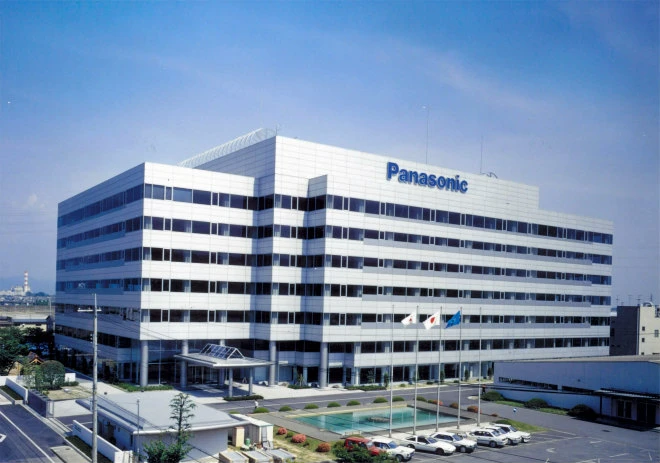
Panasonic x Timly: Driving Technological Innovation
One of the most remarkable aspects of human ingenuity is our ability to innovate. Innovation is embedded in the DNA of consumer electronics giant Panasonic, which has diversified into a number of sectors, from heavy industry to construction...
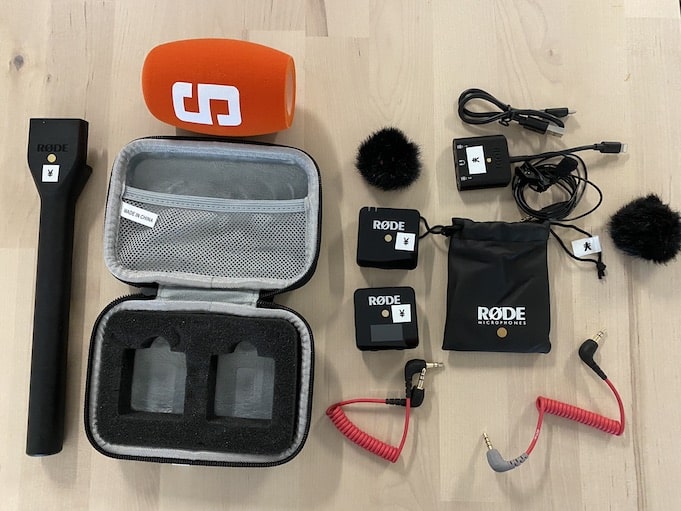
Manage Video Equipment Efficiently Without Much Effort
The Hamburg media company always does outstanding journalistic work and is characterized by independent reporting. In order to maintain journalistic quality, the teams work with highly specialized devices – these need to be managed efficiently...

Smart City Asset Management – Timly in Use at DIGOOH
The core business of DIGOOH Media GmbH in Cologne is to manage digital city light posters (DCLP) for outdoor use in various cities in Germany. The challenge here lies in making the client’s communication message always available at the right time, in the right place...
(No credit card required)
How Does IIoT Improve Business Efficiency?
IIoT helps to improve business efficiency through employing mechanisms such as:
- Ensuring the reconfiguration of production lines allows manufacturers to adapt to market changes. Hence, employ real-time data and insights to ensure operational flexibility and agility.
- Ensuring faster innovation so businesses can focus on improvement and make data-driven decisions. It uses real-time data to determine inefficiencies in areas that need improvement.
IIoT integrates AI and machine learning, helping businesses analyze copious amounts of information and offer insights and predictions. This improves decision-making, enhances innovation, saves costs, and ensures streamlined operations.
Overall, IIoT ensures that businesses increase their flexibility and agility through real-time monitoring, driving innovation through data-driven improvements, and integrating it with AI.
Who Benefits the Most From IIoT?
Those who benefit from IIoT are:
Manufacturers
They benefit from using IIoT to enhance operational efficiency, improve product quality, and increase their ability to collect real-time data. Integrating smart sensors and real-time data enables predictive maintenance, reduces downtime, and optimizes production processes, leading to cost savings and higher productivity. Additionally, IIoT supports sustainable practices by reducing energy consumption and waste, contributing to a greener manufacturing environment.
Logistics Companies
These companies benefit from IIoT through improved supply chain visibility and enhanced asset tracking. IIoT devices can monitor the condition and location of goods in transit, ensuring timely delivery and reducing the risk of damage or loss. Real-time data also helps optimize routes and manage inventory more effectively, reducing costs and improving customer satisfaction.
Healthcare Providers
They benefit from IIoT through better patient care and operational efficiency. Connected devices and sensors can monitor patient health in real-time, enabling early detection of issues and timely interventions. This leads to improved patient outcomes and reduced hospital stays. Additionally, IIoT can streamline administrative tasks, such as inventory management and equipment monitoring, freeing up staff time and resources.
Employees
They benefit from IIoT through improved safety and reduced workload. Smart sensors and connected devices can monitor hazardous conditions and alert workers to potential risks, creating a safer work environment. Automation of routine tasks through IIoT reduces the physical and mental strain on employees, allowing them to focus on more critical and value-added activities. This not only enhances job satisfaction but also contributes to overall well-being.
Cross-Industry Applications of IIoT
Here are the cross-industries that use IIoT:
Agriculture
IIoT supports agriculture by enabling farmers to make informed decisions about harvesting times. Smart sensors and automated machinery provide real-time data on crop conditions, soil health, and weather patterns. This information helps farmers optimize resource usage, enhance crop yields, and reduce waste.
Retail
In the retail industry, IIoT enhances inventory management and customer experience. Smart sensors and connected devices monitor stock levels, track product movement, and provide real-time data on sales trends. This data allows retailers to optimize supply chains, reduce stockouts, and personalize customer experiences through targeted marketing and promotions.
Energy
IIoT plays a crucial role in the energy sector by improving efficiency and sustainability. In oil and gas, IIoT systems monitor the health of machinery and IoT and predictive maintenance, reducing downtime and operational costs. Smart sensors also track the transportation and storage of resources, ensuring safety and efficiency. In renewable energy, IIoT optimizes the performance of solar panels and wind turbines, enhancing energy production and distribution.
IIoT’s cross-industry applications highlight its potential to drive innovation, enhance productivity, and support sustainable practices across various sectors.
Frequently Asked Questions About Benefits of IIoT
What Are the Benefits of IIoT?
How Does IIoT Improve Efficiency in Manufacturing?
Recommended for you:
Book an online demo - free and without obligation - or create your free trial account directly.






